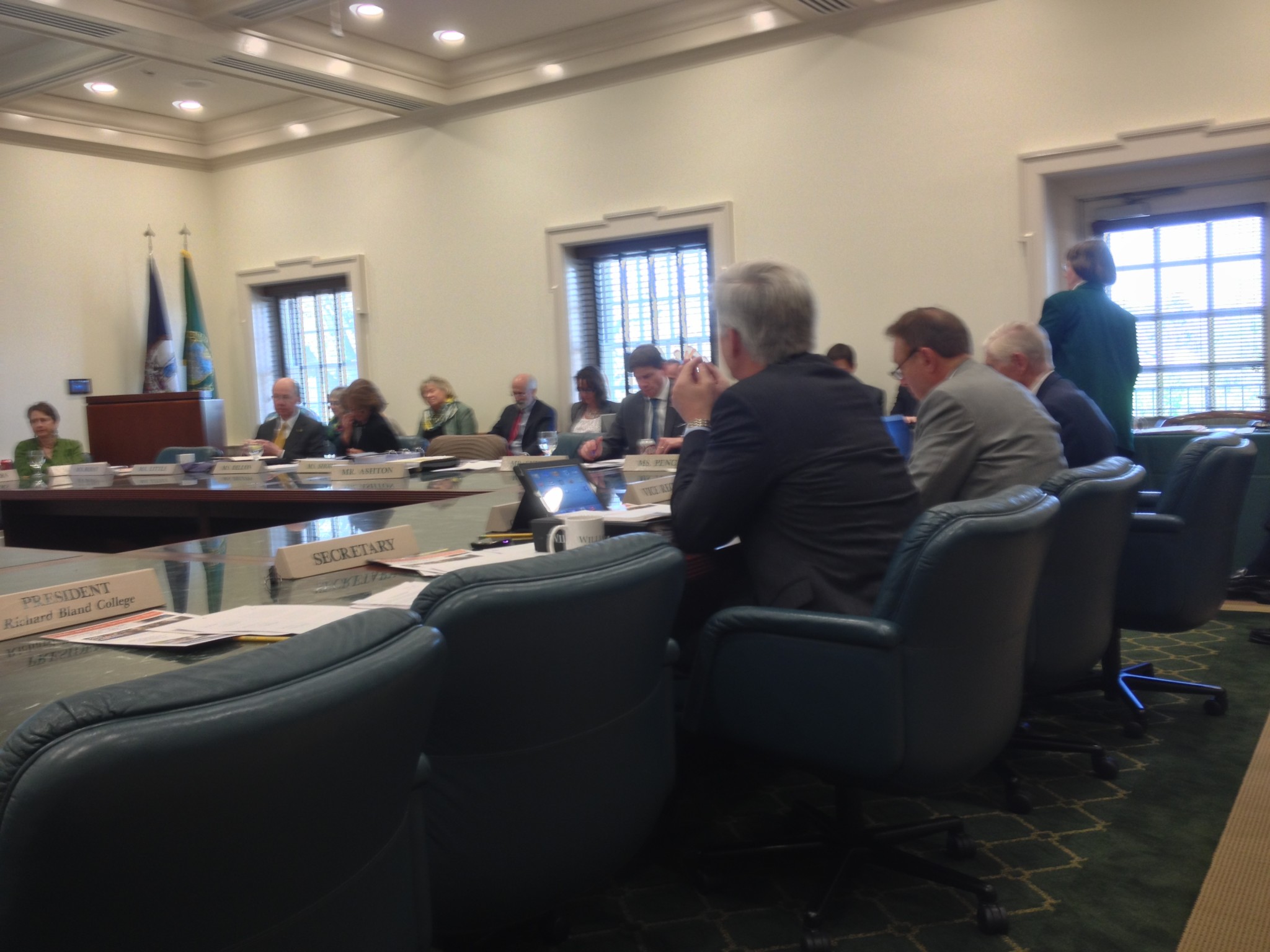Board of Visitors members and Center for the Liberal Arts Fellows discussed the College of William and Mary’s new curriculum Thursday afternoon.
Dean of the Faculty of Arts and Sciences Kate Conley presented an overview of the COLL curriculum, which will take effect for the class of 2019. Conley described the components of the curriculum, focusing on the COLL 100, COLL 150 and COLL 200 courses incoming students will begin taking after they arrive on campus.
Conley said that the College’s hope for each semester next year is to offer 34 COLL 100 courses with 850 seats, 57 COLL 150 courses with 850 seats, and 62 COLL 200 courses with 3,640 seats.
Following Conley’s presentation, Board of Visitors member Ann Green Baise voiced concern regarding transfer students’ ability to complete the new curriculum.
“I still have a little unease about our transfer students,” Baise said. “When they come in the third year, I know we’re not ready to implement that right now, but we need to make sure we make the adequate arrangements for them. I mean, it’s already difficult to transfer to this college and wrap themselves into what’s going on when there have been people here two years running and know how everything is. I just want to make sure we don’t set them up for any type of failure, disappointment [or] disillusionment.”
Conley responded that next year, transfer students will not be taking COLL classes when they arrive. She also mentioned that faculty members are aware of this issue and that Dean of Undergraduate Students John Griffin is very involved in helping to address it.
Chancellor Professor of Physics Gene Tracy and associate professor of history Paul Mapp represented the Center for the Liberal Arts Fellows, a group of faculty members helping to prepare for the curriculum change.
Tracy and Mapp described the COLL curriculum as authorizing boldness, emphasizing that it will allow faculty members to tackle big questions and collaborate with professors in other departments to design interdisciplinary courses.
“What we’re asking faculty to do is to stretch themselves,” Mapp said, “[to discuss] the kind of topics that are going to force them not just to talk about the extent of their knowledge, but to actually show the limits of their knowledge, not just to teach students but to learn with them. It sounds kind of exciting, but it also sounds vaguely frightening. The question was, ‘How could we get faculty to come forward and do this?”’
Since the curriculum’s approval last year, the Center for the Liberal Arts has held brown bag lunches, one-on-one conversations with professors and departmental retreats to ease the transition between curriculums.
Mapp said over half of the Arts and Sciences faculty have attended one or more Center for the Liberal Arts activity since February 2014.
“What you can’t see [from a slide] is what we’ve been able to see, which is the look in the eyes of the faculty members coming to these workshops,” Mapp said. “When they arrive, sometimes they’re a little nervous, even a little skeptical. When they go out, what we see in their eyes is enthusiasm, inspiration, energy.”
Several Fellows — associate professor of chemistry Carey Bagdassarian, English professor Deborah Morse, and Hispanic studies professor John Riofrio — echoed Mapp’s enthusiasm.
“What the Center for the Liberal Arts does so powerfully is that it interweaves this kind of dynamism,” Riofrio said. “That energy ends up impacting the way I teach all of my courses, and that’s the key, is that as soon as you start having these discussions, it ends up changing how you teach, and even how you see yourself connected to the larger community. It affects everything that you teach from here on out.”

